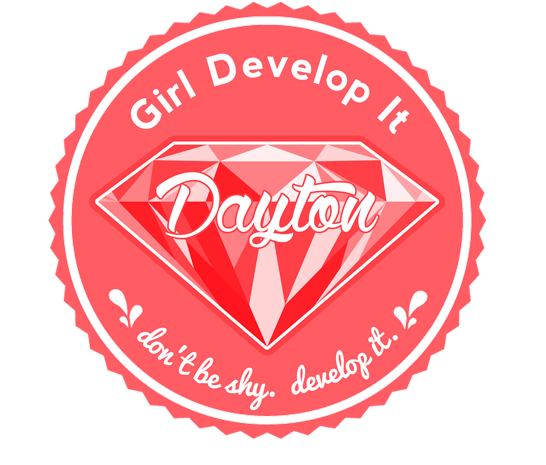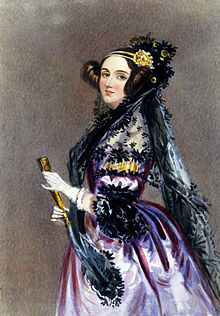
Intro to Ruby
Class 1
About Me

About the TAs
Introduce Yourself!
- Who are you?
- What do you hope to get out of this class?
- What are you looking forward to the most this year?
- What is your programming experience
Install Discussion
How was the install and playing with command line? Do you have any questions or concepts that you'd like to discuss?
What we will cover today
- What is programming?
- Why Ruby?
- Variables, Arithmetic & Objects
- Methods and Error Messages
What is programming?

- Ada, Countess of Lovelace.
- Charles Babbage's Analytical Engine
- A program is made of one or more files of code, each of which solve part of the overall task.
- Code is human readable.
- But the computer needs specific instructions to run that are not as easy to read.
What is programming?
- Teaching the computer to do a task.
- To create the form of code the computer can use, we use the Ruby interpreter. Other languages use other interpreters or a compiler
- Don't focus on what's "under the hood" for now. We will "drive the car" first.
Why Ruby?
- It reads like English. The syntax is intuitive.
# Java for(int i = 0; i < 5; i++) # Ruby 5.times do - The community is large, active and interested in helping others learn.
- You can get a web app off the ground quickly.
What is Ruby used for?
- Web development (Rails)
- iPhone & Android apps (RubyMotion)
- System Administration (Chef)
- Testing (Vagrant)
- Security (Metasploit)
Who is using Ruby?
- Hulu
- LivingSocial
- Groupon
- Basecamp
- Github
- #3 in 2015 on github
- More Success Stories
Working with Interactive Ruby Shell (IRB)
- IRB is a command line interface to Ruby that is installed along with Ruby. It works kind of like a calculator and is a great way to get started quickly.
- Open: In the terminal, type
irb - Quit: Type
quitand then pressenter - Follow along with the examples in the slides ahead. Type them in!
- Feel free to explore as well. You will not accidentally break things.
Arithmetic
Try out some calculator functions
3 + 4
2 * 4
6 - 2
4 / 2
4 /* 2
=> SyntaxError: (irb):10:syntax error, unexpected *
Arithmetic
Other Ruby Math Operators
11 % 5
=> 1
2 ** 3
=> 8
Errors are Neat!
- There are different kinds of errors that can occur. We just saw the SyntaxError which often helps us find misspelled words or missing quotes.
- Take time to read each Error. They often tell you how to fix the issue and can be a great starting point when searching for help online.
irb> hi
NameError: undefined local variable or method `hi' for main:Object
Variables
- Variables are references to information.
- We reference variables by name.
- They are called variables because the
information they reference may change.
# Everything after this pound sign will not be evaluated.
# These are called comments and I will use them to annotate code
age = 50
days_in_year = 365
days_alive = age * days_in_year
=> 18250
Ruby's Variables and Constants
- Ruby has variables, constants and literals.
- A variables starts with a lower case letter or an underscore character (_) and consists entirely of letters, numbers and underscores.
- Constants do not change and are typically in all caps.
- Literals are literal values, for example the number 3 or the string 'hi'
# variables
age = 50
_age = 50
_my_age = 50
# constants
PI = 3.14159
# literals
3
'hi'
What can I do with a Variable?
- Create - Initialize - Define
- Access - Read
- Assign - Replace
# create and assign in one line
age = 0
# access the value in age
age
# replace value in age
age = 40
Variable naming
- Make it meaningful
- Make it easy to read
- Make it concise
- Should be unique
- Should be understood by someone who has no idea what your program does
# good
occupation = "software developer"
# bad
occupation_i_always_dreamed_of_having_in_seattle = "software developer"
o = "software developer"
1st_occupation = "software developer"
Local Variable Values
- No default value
- No type declaration
- Do not live forever
# error
name
# defined, initalize, create
name = "KC"
defined?(name)
Data Types
Numbers | Strings | Symbols | Booleans
Regular Expressions | Arrays | Ranges | Hashes
- Data always has a "type"
- You will hear the words Class/Type/Object used interchangeably
- Let's explore a few built in Objects
irb> 1.class
=> Fixnum
irb> "Hello".class
=> String
irb> 1.0022.class
=> Float
irb> [1,2,3].class
=> Array
Numbers
Numeric data comes in two types: Integers and Floats
Integers are either Fixnum or Bignum. They do not have decimals.
irb> 1_000_000_000_000_000_000.class
=> Fixnum
irb> 1_000_000_000_000_000_000_000.class
=> Bignum
Floats have at least one number to the left of a decimal point.
irb> 1.001.class
=> Float
Number Practice
7/8
7.0/8.0
3.14.to_s
3.14.to_i
1 + "2"
1 + "2".to_i
(1 + 2) * 3
1 + (2 * 3)
How many seconds are in an hour?
How many minutes are in a week?
How many years old are you if you've been alive 1 million seconds?
Strings
Strings are characters inside double or single quotes.
a = 'Hello '
b = "World"
c = a + b
c.reverse
=> "dlroW olleH"
a = "Spam "
# Here multiplying a by 4 concatenates (links) four strings together
b = a * 4
=>"Spam Spam Spam Spam "
String Practice
"Heather".upcase
"Heather".downcase
"heather".capitalize
"Hello".reverse
"Heather".length
"Heather Moore".swapcase
"".empty?
What is the reverse of your name?
How many characters long is your name?
Can you repeat the word hello 100 times?
What is the 5th character of my name?
Methods
- Methods define the behavior for an Object.
- The "." is an operator that connects the Object of the method to the method.
- String Objects can reverse, for example.
- Let's call some methods
irb> puts "hello"
hello
=> nil
irb> "2".to_i
=> 2
irb> 2.to_s
=> "2"
irb> "2" / 5
NoMethodError: undefined method `/' for "2":String
User Input
- To obtain user input, use
gets - To print out information, use
puts - Let's create our first program together
Put the code below in a file and save it as name.rb
puts 'Hello there, and what\'s your name?'
name = gets
puts 'Your name is ' + name.chomp! + '? What a lovely name!'
puts 'Pleased to meet you, ' + name + '. :)'
Run your program from the command line:
ruby name.rb
Let's Develop It
- Write your own program using
putsandgetsto ask a user for their age and then tell them how old they are in dog years. - reminder:
getsmethod returns a string. To do math on it, convert it to an integer with the.to_imethod.
#1 dog year = 7 human years
user_age = gets.to_i
Bonus Feature 1
Update your code to return a message in all capital letters.
# YOU ARE 5 YEARS OLD IN DOG YEARS
Bonus Feature 2
Update your code to return a message in all capital letters, reversed with a count of the characters returned in parens.
# YOU ARE 5 YEARS OLD IN DOG YEARS (32 characters)
Questions?
Homework
Practice: Write a command line program that asks the user for the year they were born, then calculates their age in years, days, and seconds. Tell the user how old they are in these different formats. (Note: you'll be using gets and puts in this program, along with some math)
Temperature conversion! Make a program that asks the user for the temperature in Fahrenheit and print out the temperature in Celsius and Kelvins.
More info: Read more on methods and some basic methods already given to you Chapter 5 of Learn to Program

Intro to Programming in Ruby
@gdidayton | #GDIDAY3
We are done with class 1!
We have done a lot, I know you have questions so ask them!